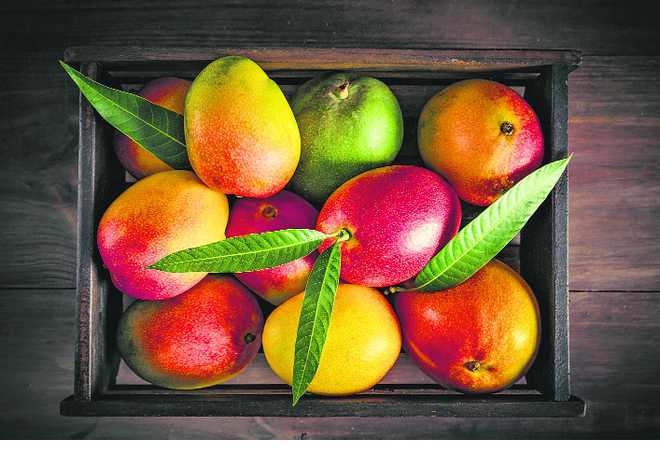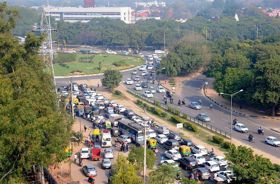
Puneetinder Kaur Sidhu
Mango season is upon us. And so is the endless debate around which region or variety bests another over taste and texture. Should you ask me, it is the Tapka. Not so much a variety but the stage when fully ripened fruit naturally falls from the tree. My fondest memories of which hark back to farm-life during childhood. They mostly include a cluster of gnarly old Malda and desi mango trees, under which an equally gnarled minder kept strict vigil till the mangoes fell to the ground. Dozens of the fibrous fruit were then crammed into freezing crevices of smashed blocks of ice packed into a massive metal tub. Around which us siblings and — it usually being summer vacation — sundry cousins would gather to compete on most number of mangoes devoured in the least amount of time. Winners were usually rewarded with medication to settle grumbling insides.
While the debate blazes on, one thing is beyond doubt: that the mango is a widely relished fruit. Indeed, has been since times hoary, if its recurrence as a motif in art, craft, design and literature is any measure of its magnitude. The mango tree has in itself been indelibly etched into countless works of art, miniatures included. The National Museum in Delhi houses one such from the Deccan School, circa 18th century. It shows the 14th-century poet Amir Khusro in conversation with his spiritual master Nizammuddin Auliya, seated under the shade of a mango tree laden with ripened golden fruit. A charmed Khusro is believed to have anointed it the fairest fruit of the country: naghza tarin mewa Hindustan. Equally fascinated by mangoes was the itinerant Ibn Battuta, who made copious notes about their look, feel, flavour and use in his famous journals. Traditional adornments also profusely depict the Indian national fruit in a number of glittery avatars. Southern India, home to such delicious and blushing varieties as Banganapalli (aka Benishan), Sindhoora, Totapari and Badami, is just as smitten with the manga malai, a gem-encrusted gold necklace strung with mango-shaped pendants.
Call it what you will — ambi, kairi, paisley — nowhere is this symbol of fertility and prosperity as vibrantly represented as in the Indian textile. Be it the fine needlework on Kashmiri pashminas, or the kalamkari block prints of Andhra Pradesh, craftsmen have long and skillfully employed an abundant use of the stylised mango in their creations. It also came to be embroidered on to the cool muslins that Nur Jahan introduced to her tropical wardrobe. We now know it as chikankari, a handicraft synonymous with Lucknow. Incidentally, the epicurean Nawabs of Awadh were the earliest beneficiaries of the original Dasheri cultivar; the mother tree of which still stands in an eponymous village near Kakori in Uttar Pradesh.
Similarly, the paisley shows up unfailingly in the borders of the silk sarees of Paithan, a weavers’ town in Maharashtra. This western state also boasts of the Alphonso, an expensive mango variety christened after General Afonso de Albuquerque, a military expert who secured the island of Goa for his Portuguese masters in 1510. Later colonials, like the British, were somewhat less smitten by the fruit. Hand woven Kashmiri weaves with their delicate sui-work patterns were also set aside for assembly line versions manufactured in Paisley, a Scottish textile town that ironically lends the mango motif its English name. Back home though, the mangifera indica continues to earn its stripes as the ‘king of fruits’, as it has for thousands of years.


























